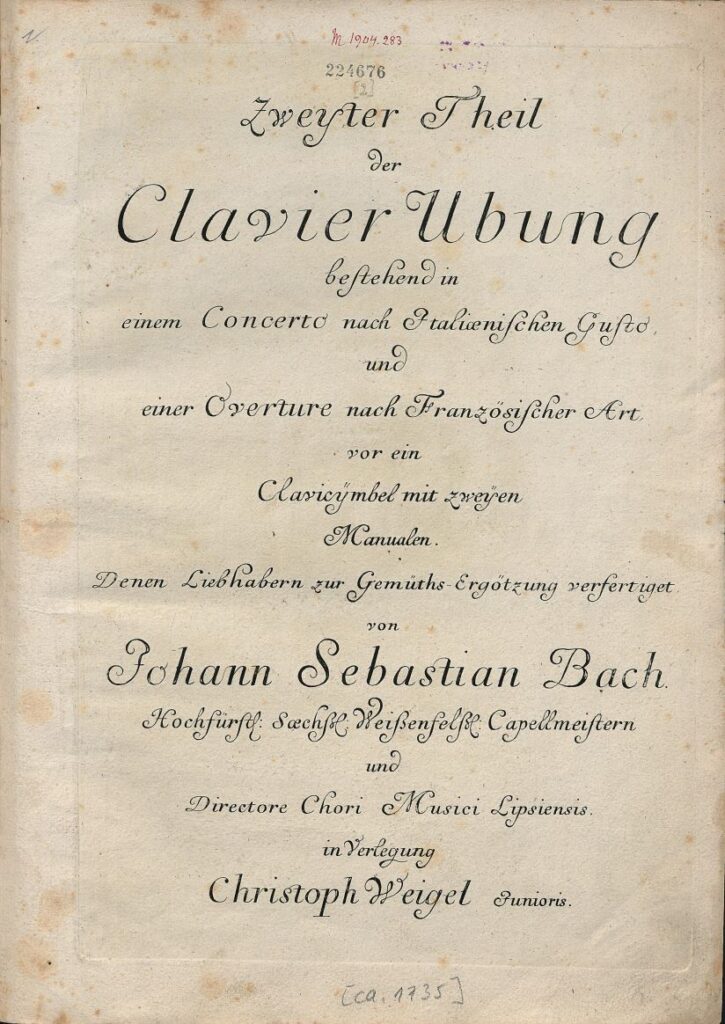The Italian Concerto, or “Concerto in Italian Taste” as the title page says, is a concerto in three movements for solo harpsichord. It was published by Bach in 1735, together with the “Overture in the French Style” (BWV 831), in a volume entitled “Clavier-Übung II”, one of the few music publications produced during his lifetime. The front page reads “composed to refresh the spirits of music lovers.”
Notwithstanding Bach’s precedent of having copied and transcribed multiple concertos of Italian origin for harpsichord or organ, the “Italian Concerto” is an original composition. It summarizes the main attributes of the style: the division into three movements, the structure of the fast movements, the contrast between forte and piano sonorities, and the lyricism of slow movement. In the context of this format, the density of the language and the complexity of the counterpoint are the personal and unmistakable stamp of Bach.
The exterior movements, with an agile tempo, include themes that reappear regularly, varied and treated as concertinos or ripienos, taking advantage of the two manuals of the harpsichord. The central Andante presents a melodic and ornamental theme with rhythmic accompaniment in the left hand, a structure that could perfectly have been assigned to a solo melodic instrument and string orchestra.
